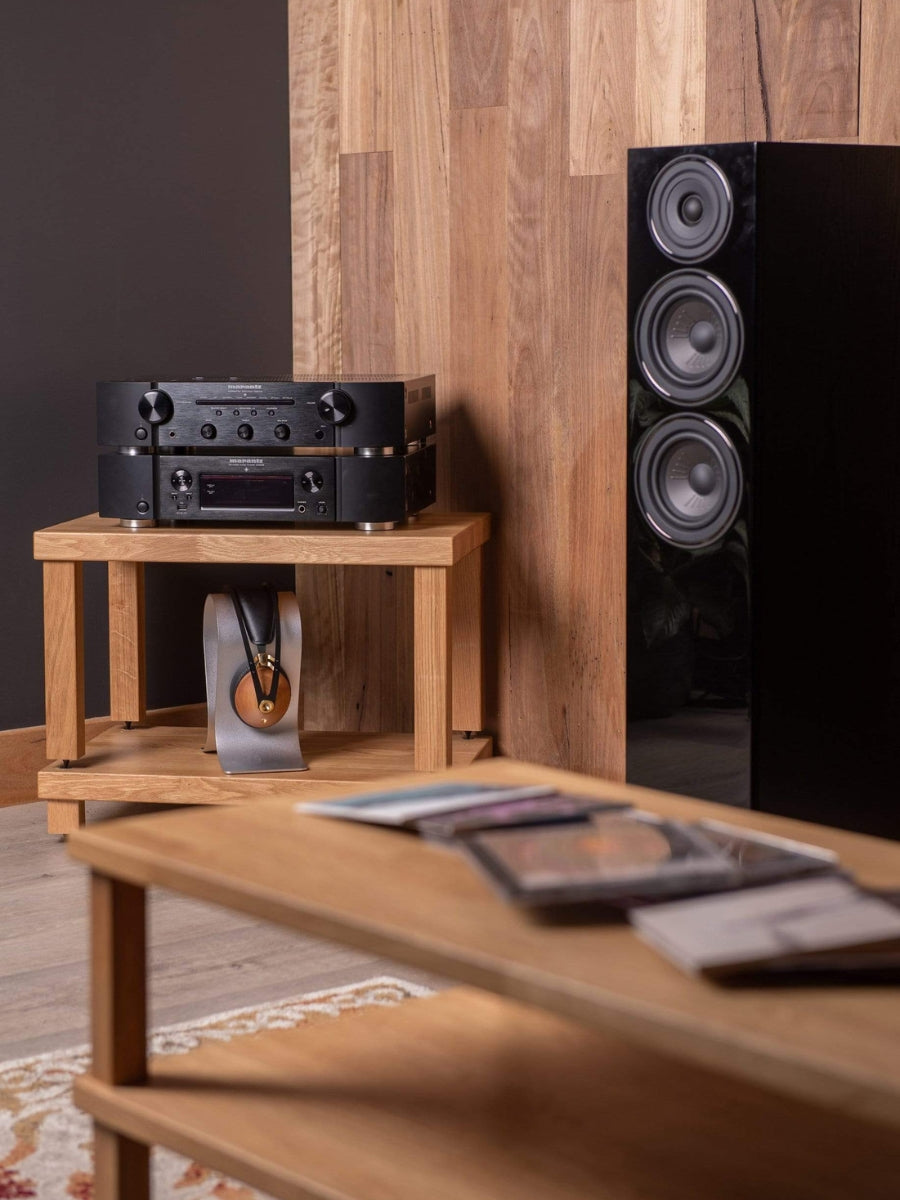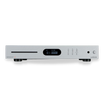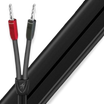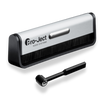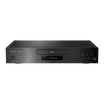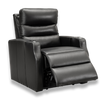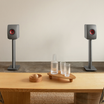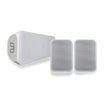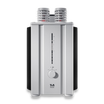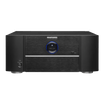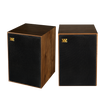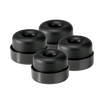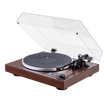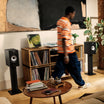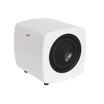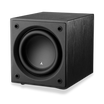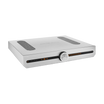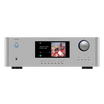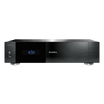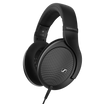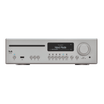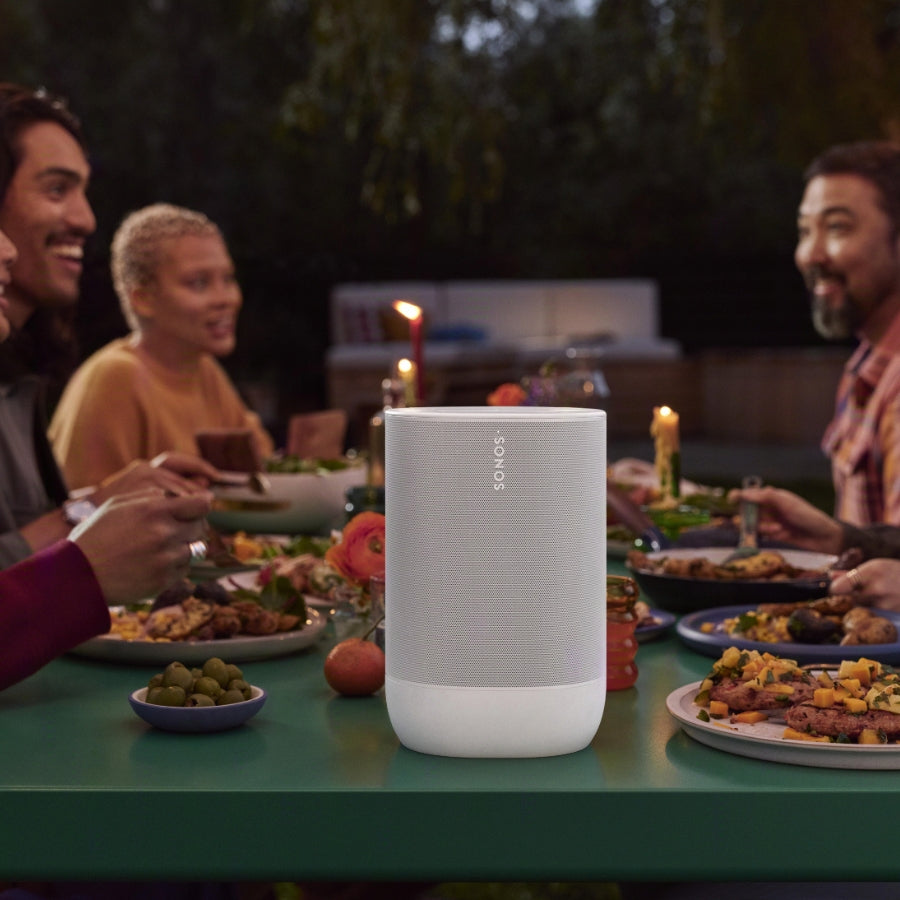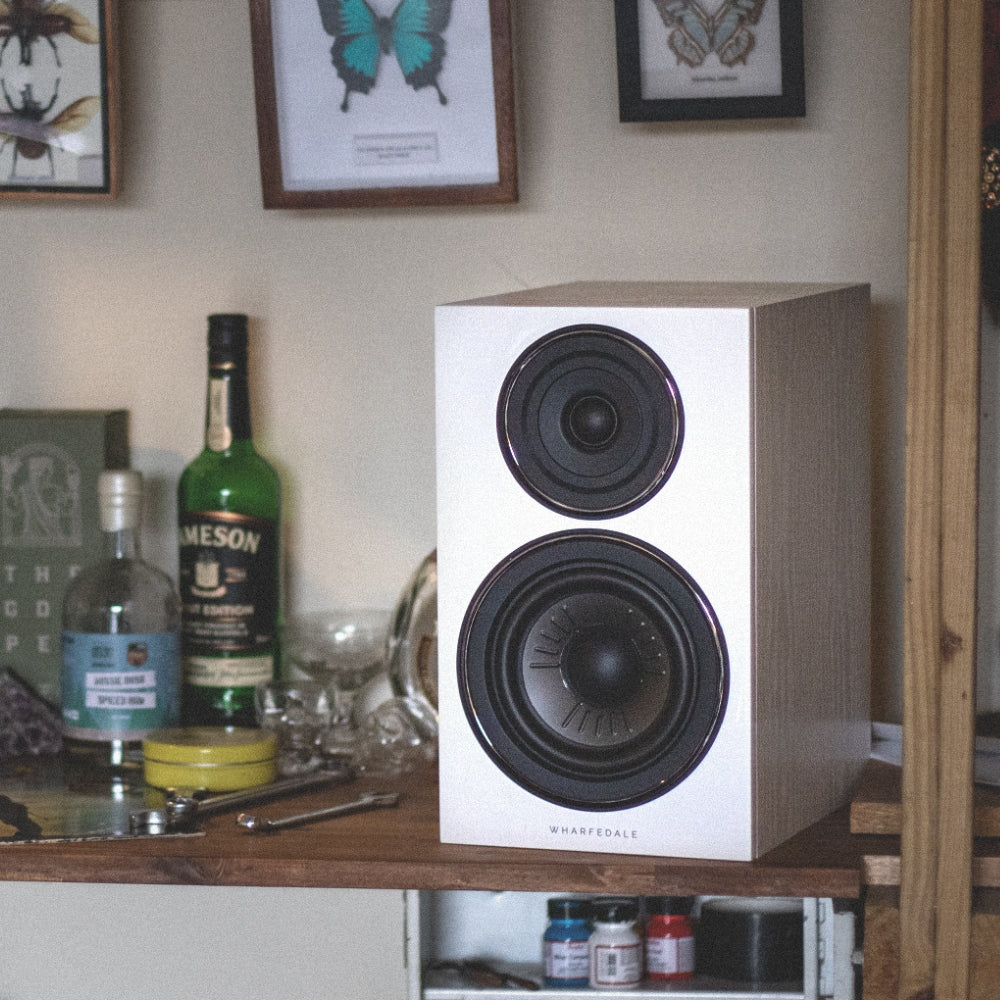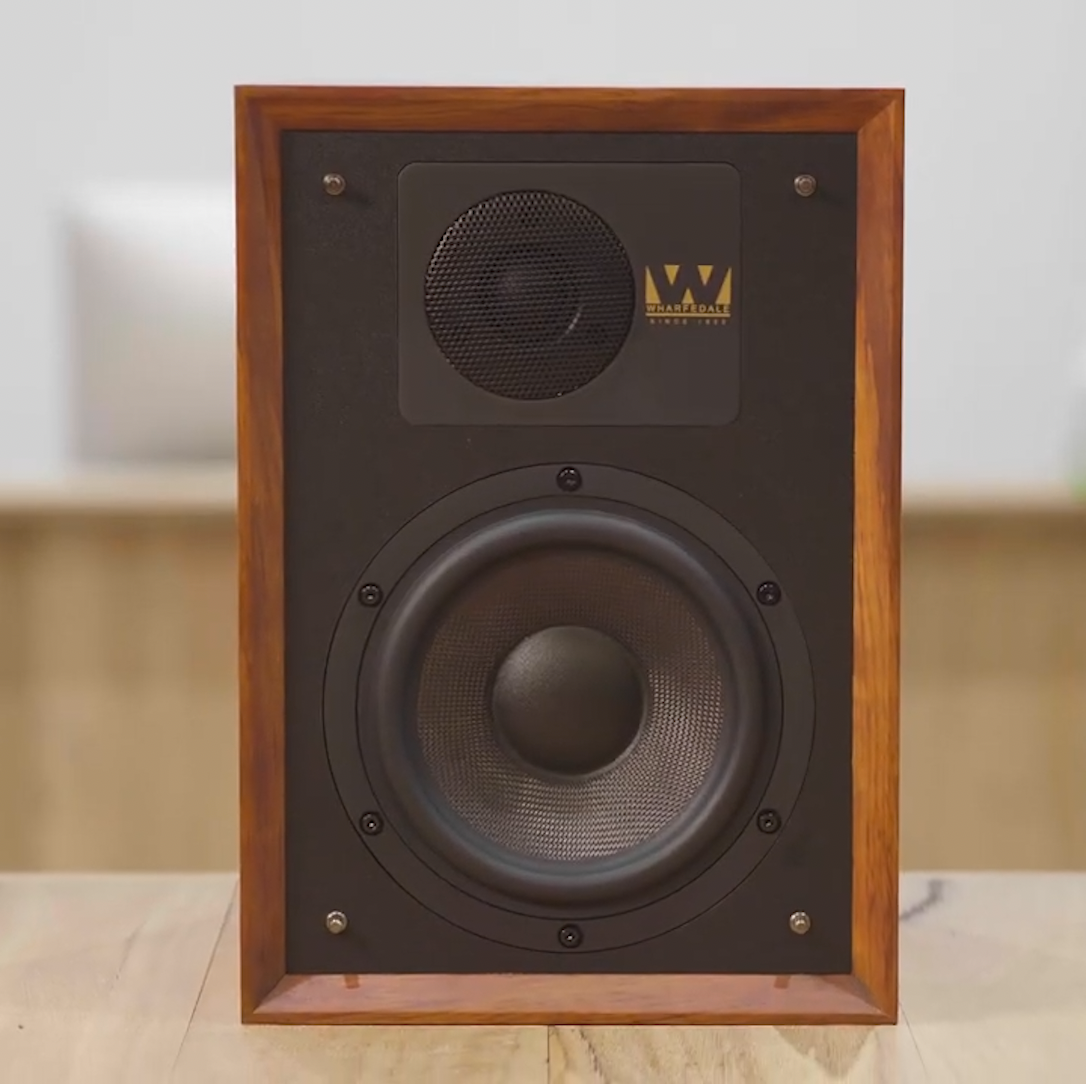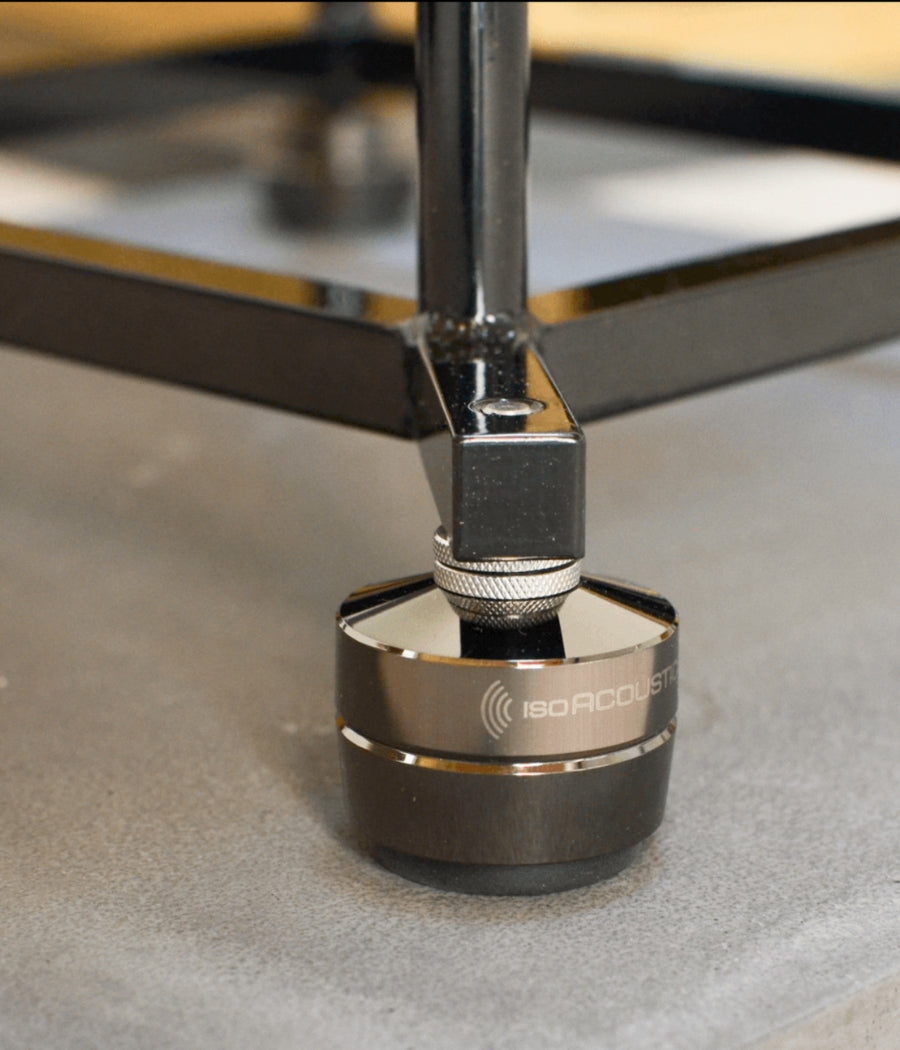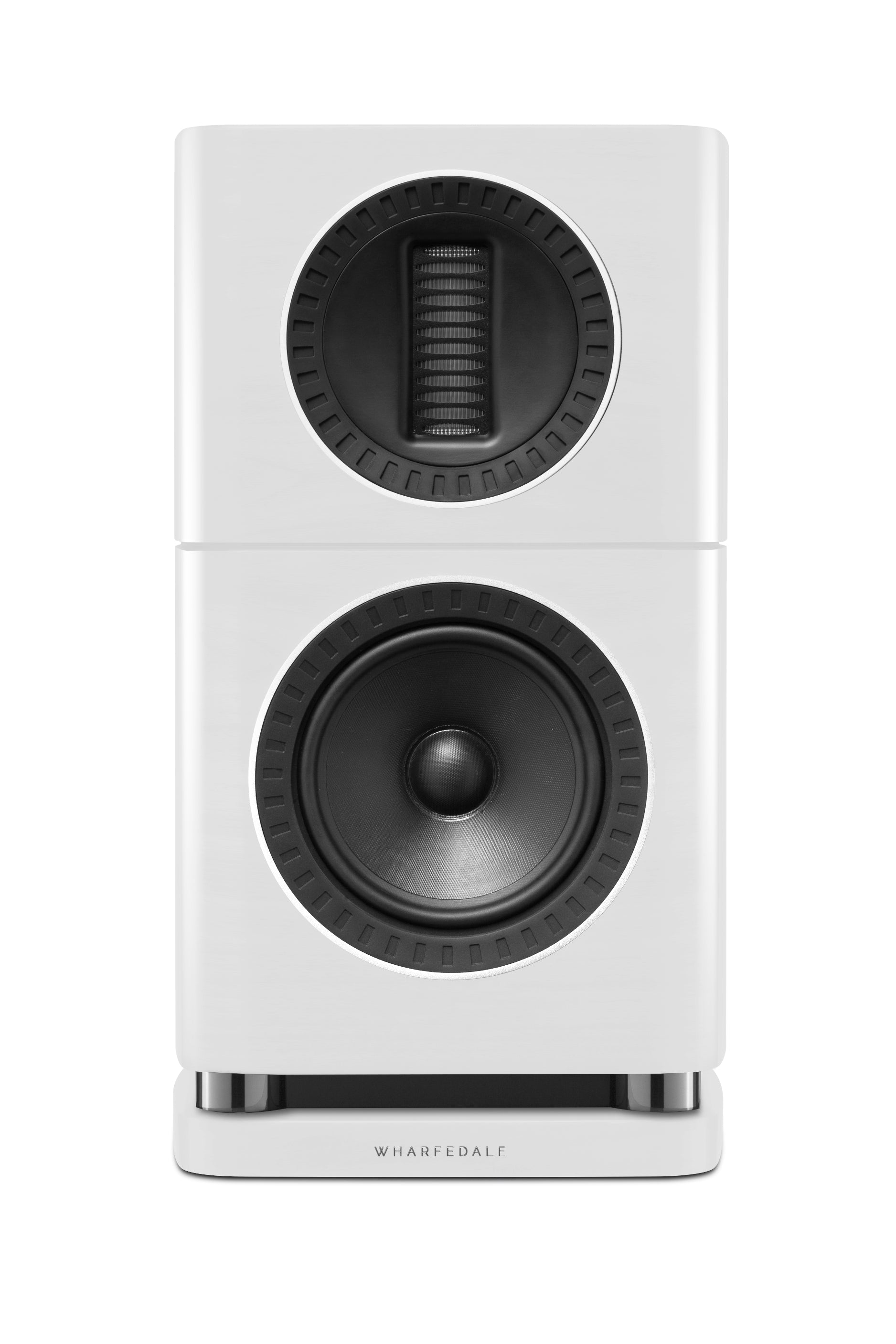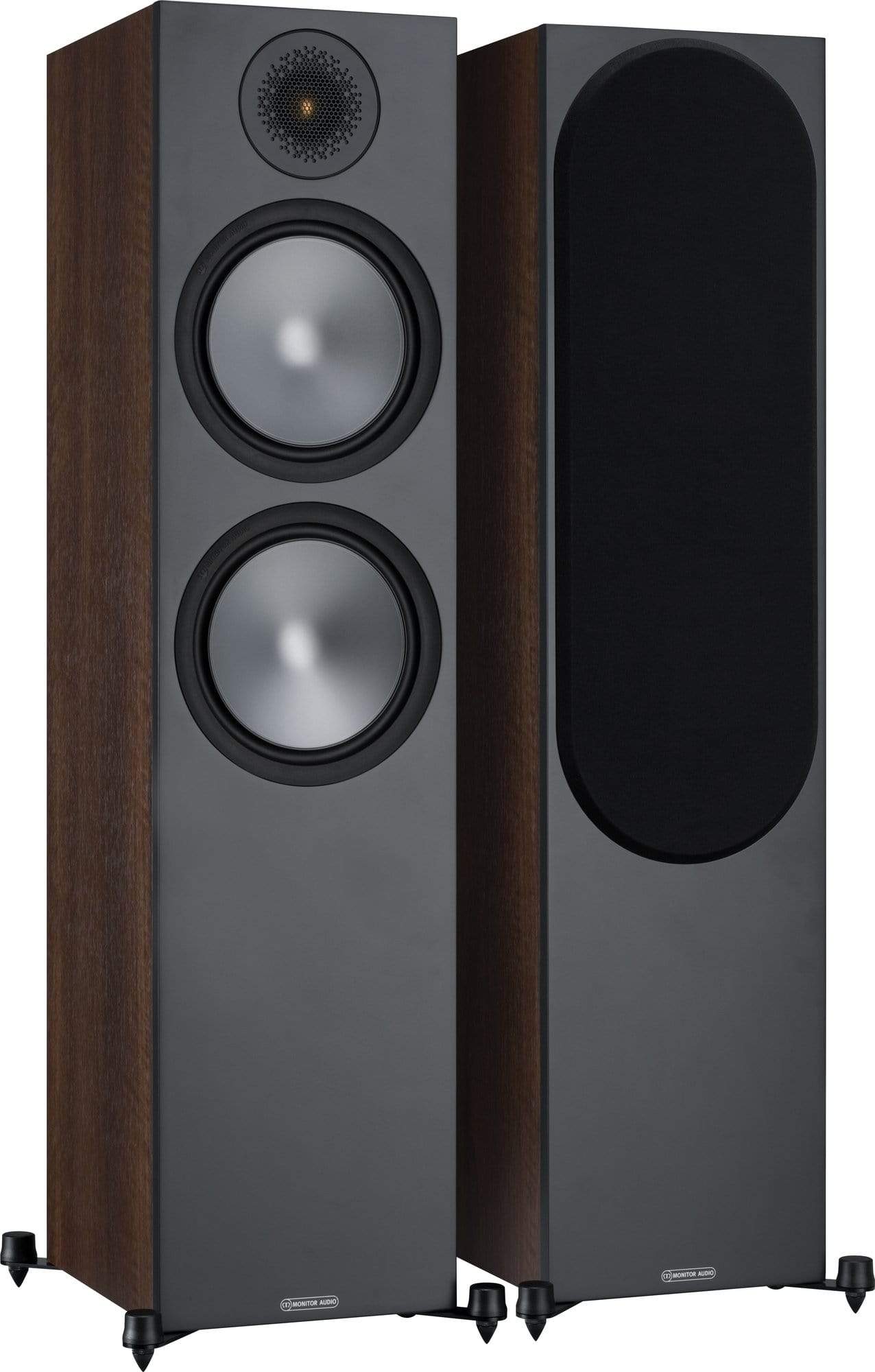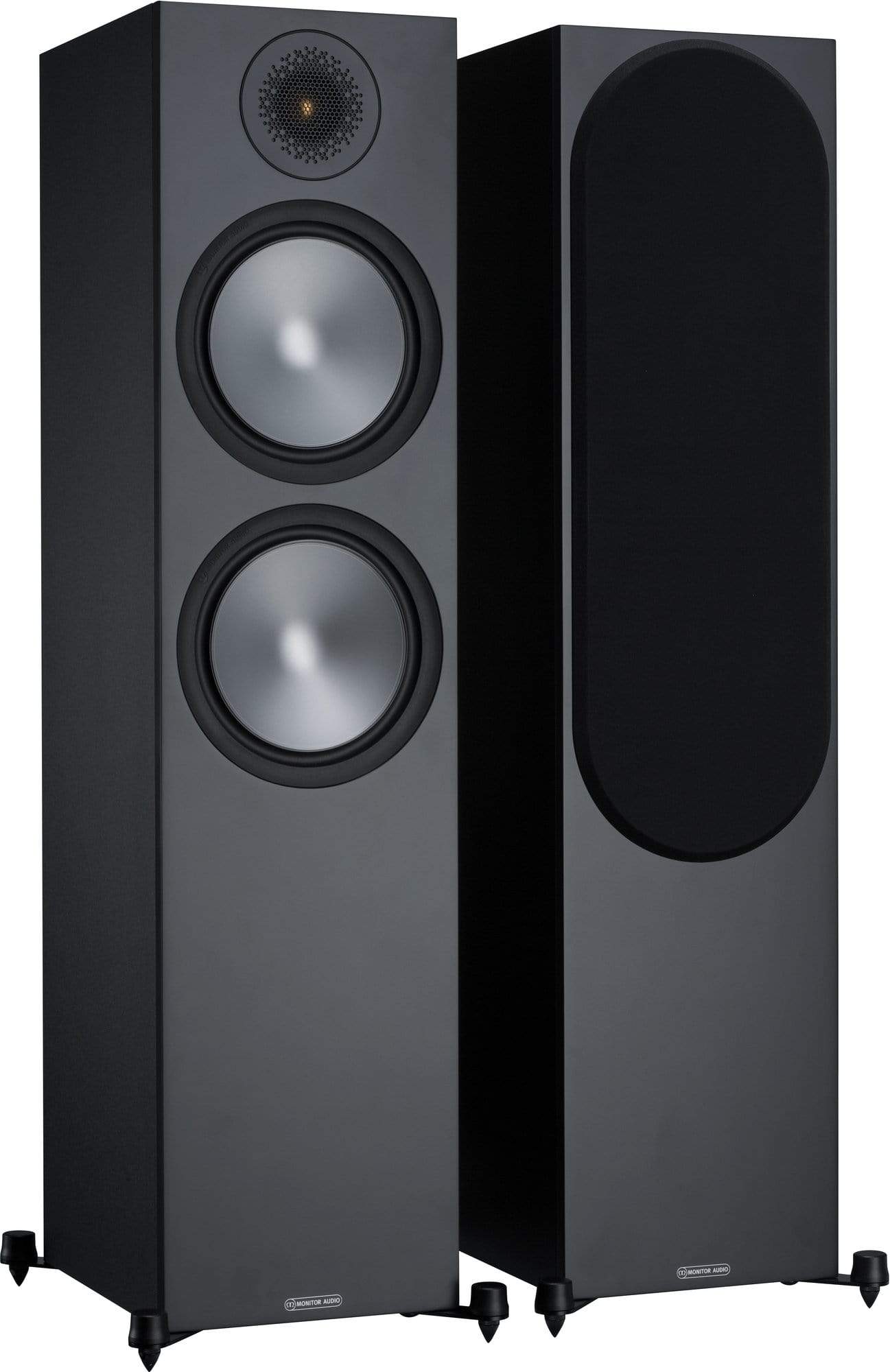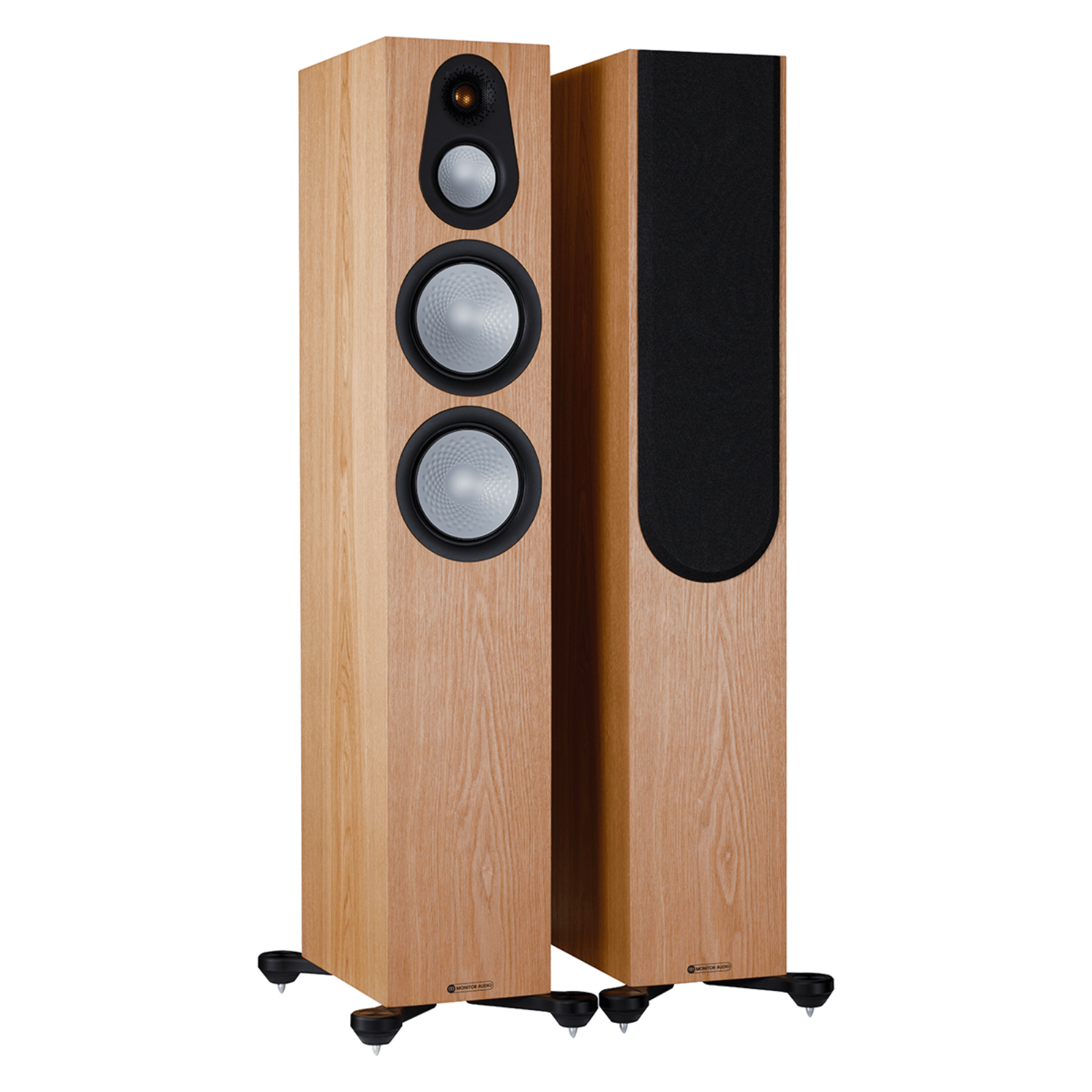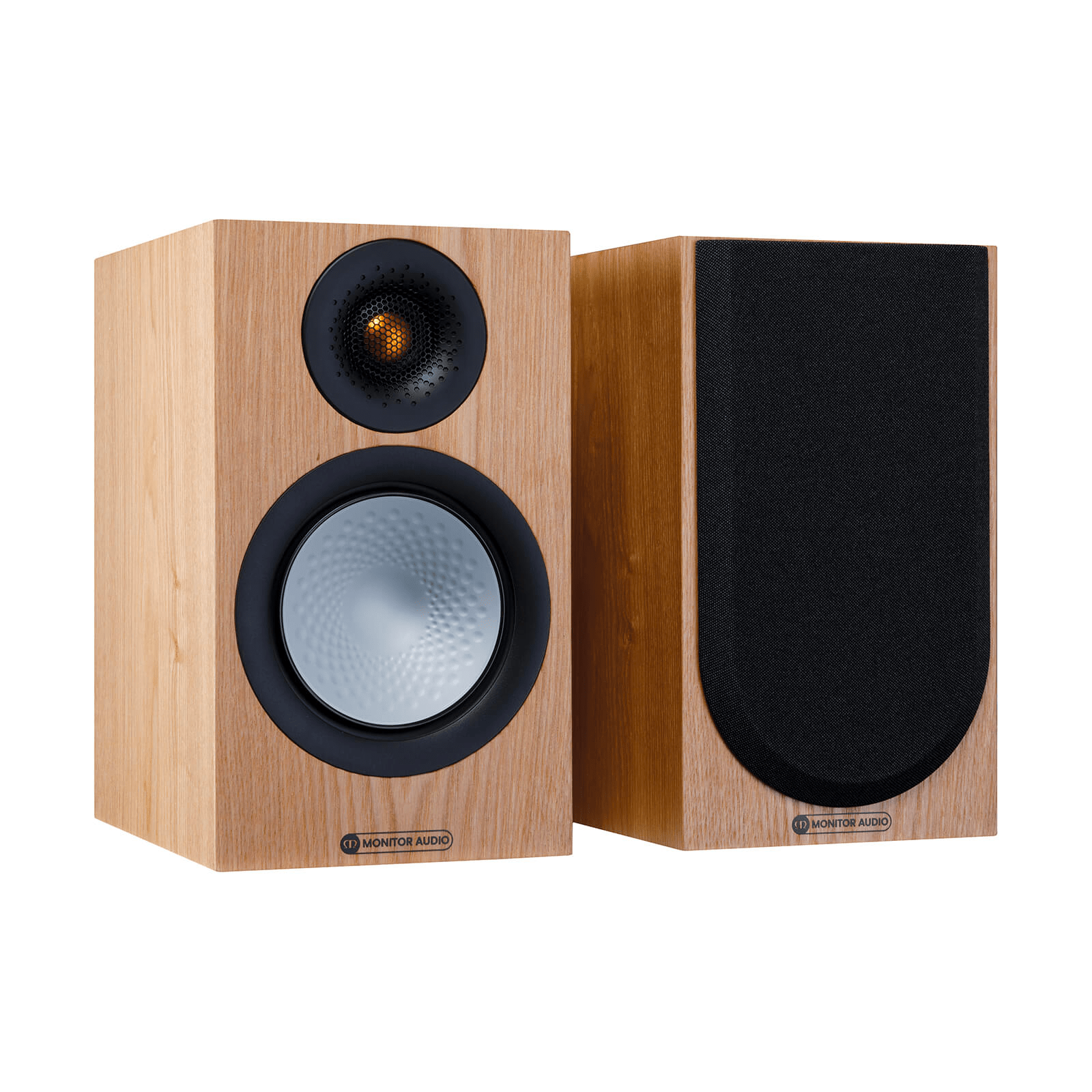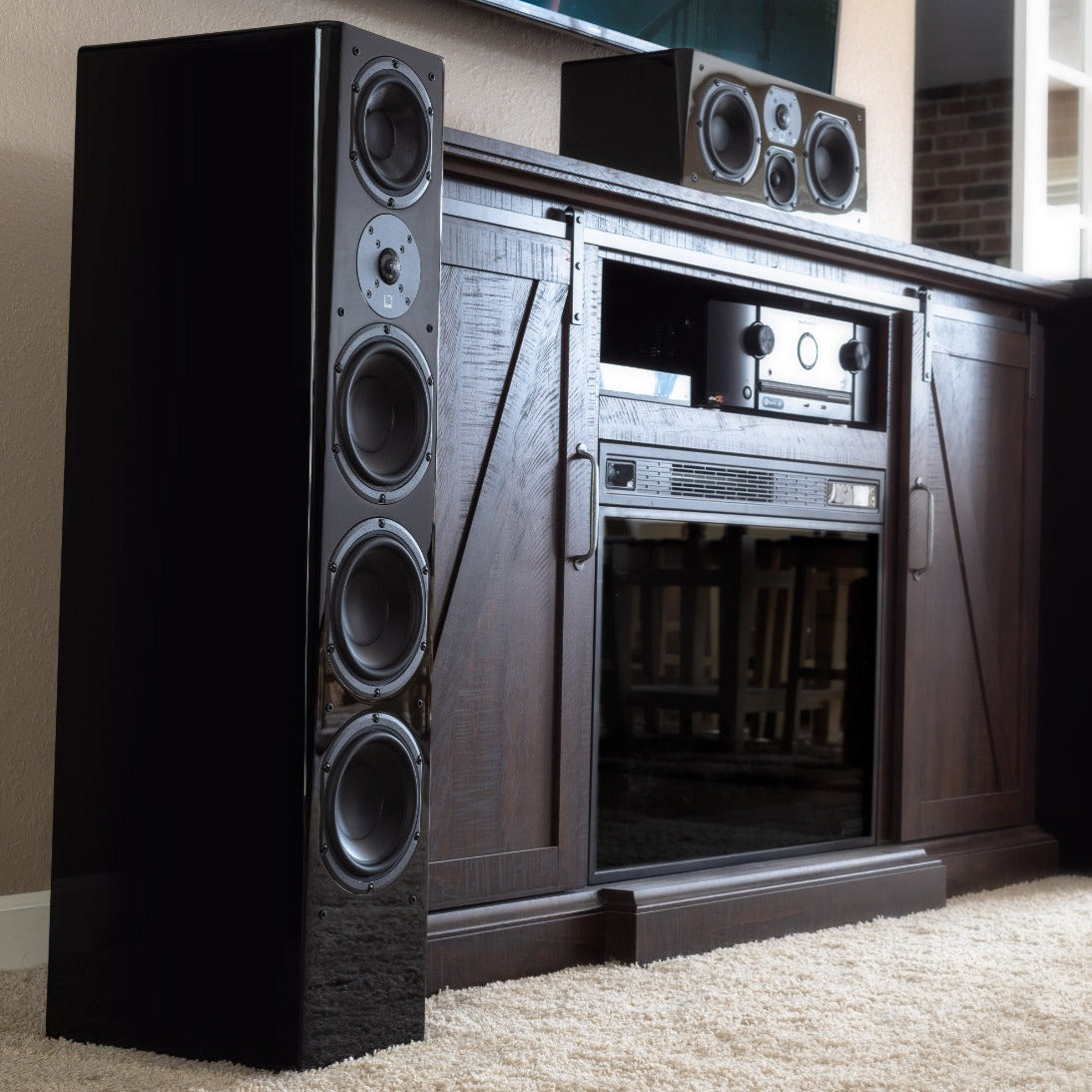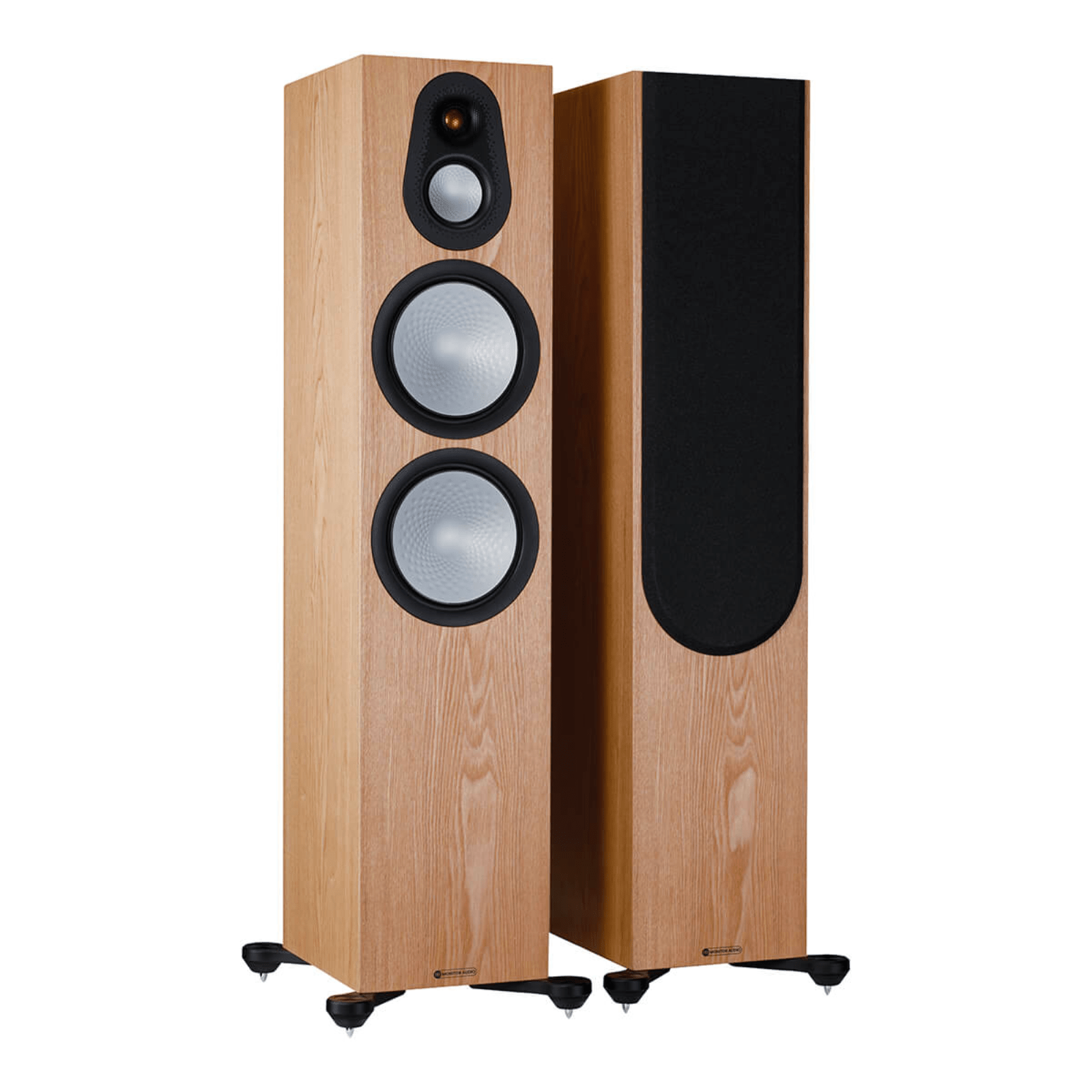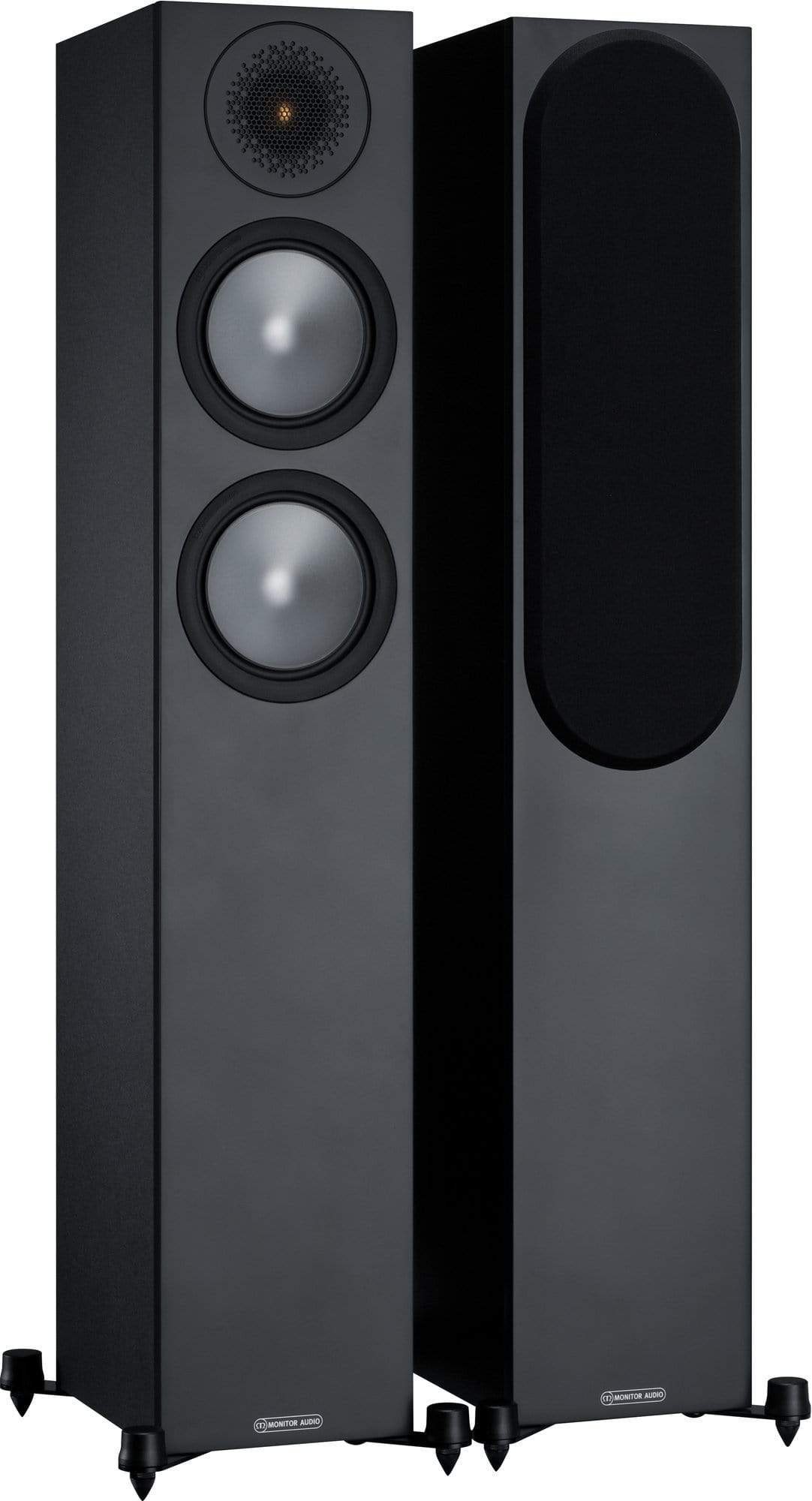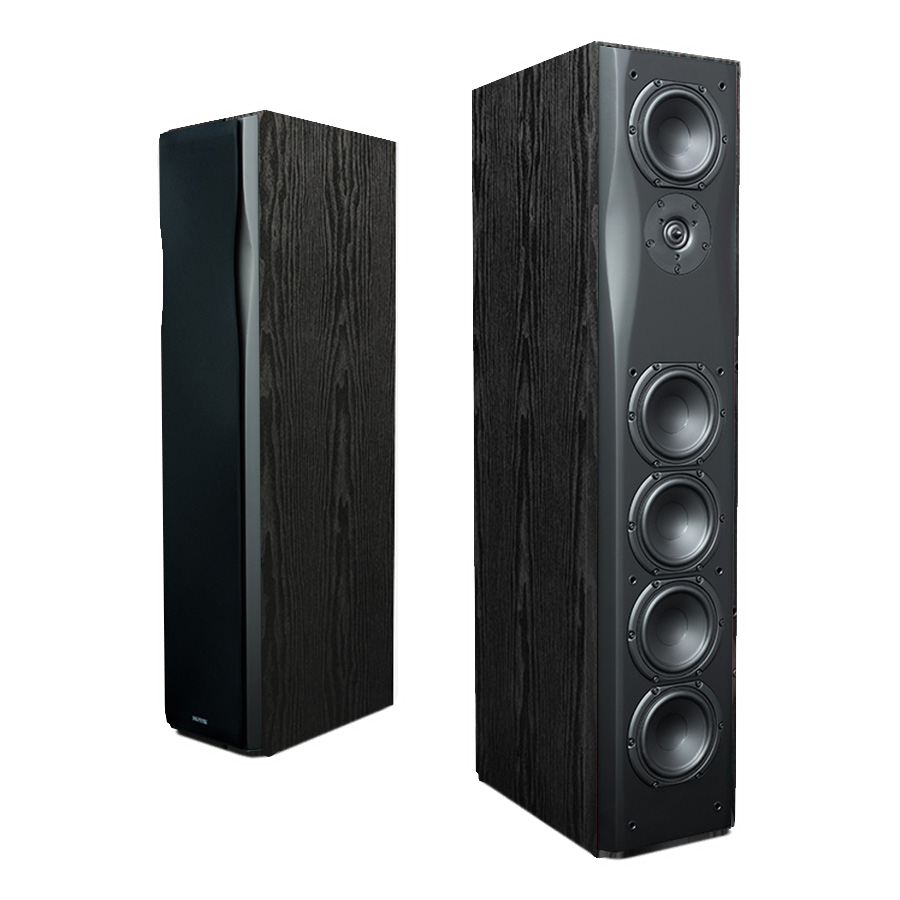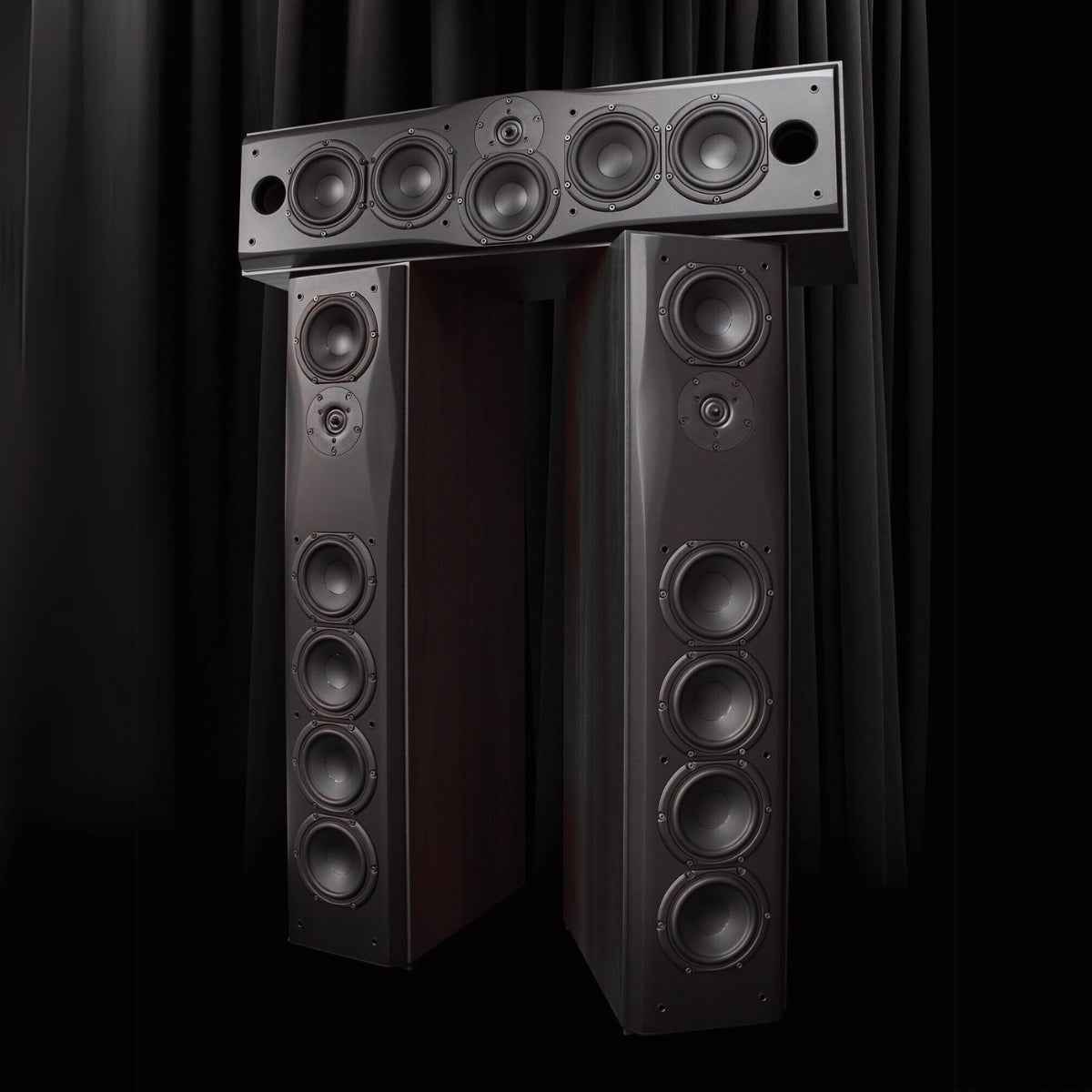

Nat's pick

$3,059.00
NARROW YOUR SEARCH FOR
Speakers
Filters
205 products
TELL ME MORE ABOUT
Speakers
Speakers. Probably the most well-recognised and talked about component of most Hi-Fi systems. We are never one to necessarily say that... Read More
Speakers. Probably the most well-recognised and talked about component of most Hi-Fi systems. We are never one to necessarily say that 'one component is more important than the other' - but without high-quality speakers in place, your Hi-Fi system is going nowhere fast.
Speakers 101:
In an audio system, be it a home theatre, hi-fi music setup, or even a portable rig, the speaker is the final component in the signal chain. All components, such as turntables, CD players, or streaming devices, produce or process the sound in an electrical form. Amplifiers then increase the power of these signals. However, it's the speaker that takes these amplified electrical signals and turns them into something we can hear. Think of them as the last messenger, taking all the data and converting it into a format our senses can understand. A good speaker does this with accuracy, ensuring what we hear is as close as possible to the original recording or broadcast.
Different Types of Speakers
Speakers come in all shapes and sizes allowing you to completely customise your audio experience to best suit your unique wants and needs.
Floor-standing Speakers
Floor-standing speakers, often referred to as tower speakers, are tall and typically designed to sit directly on the floor. They are generally larger than other types of speakers and can house multiple drivers of varying sizes. This size advantage allows them to produce a broader range of frequencies, from deeper bass to higher trebles. Due to their more extensive and often multi-way design, they can provide a fuller, room-filling sound, making them a popular choice for home theatre systems and high-end audio setups. However, their larger footprint means they might not be suitable for smaller rooms or spaces where floor real estate is limited.
Bookshelf Speakers
As the name suggests, bookshelf speakers are compact enough to fit on a shelf, desk, or other raised surfaces. They are smaller than floor-standing speakers and typically designed for mid and high-frequency reproduction, although many modern bookshelf speakers deliver impressive bass for their size. Often used in stereo setups or as rear speakers in surround sound systems, they're versatile and suitable for rooms where space might be an issue. Though they might lack the depth of bass that larger floor standers can offer, they often provide more precise imaging and detail.
Bluetooth/Wireless Speakers
Wireless speakers have gained immense popularity in recent years due to their convenience and evolving technology. These speakers connect to audio sources via Bluetooth, Wi-Fi, or other wireless technologies, eliminating the need for physical cables. This freedom of placement and ease of setup make them a favourite for multi-room audio systems or for those who prefer minimalistic setups without the clutter of cables. While historically, there were concerns about sound quality over wireless connections, advancements in technology have largely bridged this gap, allowing wireless speakers to deliver sound quality on par with their wired counterparts.
Choosing the Right Speaker for Your Needs
Selecting the perfect speaker isn't just about finding the one with the best reviews or the highest price tag; it's about matching a speaker's capabilities to your specific listening environment, preferences, and purpose.
-
Room Size and Acoustics: The dimensions and acoustics of your room play a significant role. For larger rooms, you might consider floor-standing speakers that can fill the space with sound. In contrast, smaller spaces might benefit from bookshelf or wireless speakers which can deliver sound efficiently without overwhelming the space.
-
Purpose: Are you setting up a home theatre, a hi-fi music system, or a multi-room audio system? For cinematic experiences, you might prioritize speakers with deep bass and dynamic range. Music enthusiasts, however, may focus on clarity, tonal balance, and detail.
-
Budget: While it's tempting to assume that higher cost always equals better quality, there are many affordable speakers that offer excellent sound quality. It's about finding the best value within your budget.
-
Aesthetics and Space: While performance is paramount, you also want speakers that fit your room's aesthetic. Some might prefer the sleek and minimal design of modern wireless speakers, while others might lean towards the classic look of wooden floor standers.
-
Wired vs. Wireless: If you're looking for a clean setup without the mess of cables, wireless might be the way to go. However, traditional wired speakers can offer consistent quality and are free from potential wireless interference.
-
Listening Preferences: If you primarily listen to bass-heavy genres like hip-hop or electronic, a speaker with strong low-end performance is key. Alternatively, if you enjoy classical or acoustic music, you might prioritize speakers with clear mids and highs.
Remember, the best speaker for you is the one that meets your unique needs and integrates seamlessly into your life, enhancing every audio experience. Always consider listening to a speaker in person or checking return policies to ensure you're happy with your choice.
Enhancing Your Audio Experience
Matching your Amplifier with your Speakers
Matching an amplifier with speakers is vital for sound quality and equipment longevity. Ensure the amplifier's power output aligns with the speaker's recommended range to avoid distortion or damage. Check impedance values (typically 4, 6, or 8 ohms) to ensure compatibility between the two components. Consider the speaker's sensitivity, which indicates volume output per watt of power. Beyond technical aspects, it's beneficial to choose an amplifier and speakers with complementary sound signatures, and whenever possible, a listening test can help confirm the best match for your preferences.
Subwoofers for Deep Bass
While many speakers offer impressive bass response, nothing truly compares to the depth and rumble a dedicated subwoofer can deliver. Subwoofers are designed to reproduce the lowest audio frequencies, adding richness and depth to music, and giving movies an immersive feel. Whether you're watching an action-packed film or listening to a track with a deep bassline, adding a subwoofer can transform your listening experience, providing the powerful and resonant bass that most standard speakers can't achieve on their own.
Customizing Your Speaker System
No two listening rooms are identical, and neither are individual audio preferences. Fine-tuning your audio setup can dramatically improve your listening experience. This might involve adjusting speaker placements for optimal soundstage, using acoustic panels to manage room reflections, or even employing equalization (EQ) settings to tailor the sound profile to your taste. The goal is to create a soundscape that's perfect for your ears and your environment.
What Now?:
If you're in the market to upgrade your speakers - or simply starting out on your Hi-fi journey, get in touch with us here at LENC and speak with one of our audio experts. They will listen to your requirements and help you find the exact speakers to suit your unique needs.
Some Quick FAQ:
Are bookshelf speakers a good option?
Absolutely, bookshelf speakers are a great choice for many systems and setups. They can offer super high-quality audio with a convenient and easy-to-place size.
Are bigger speakers better than small?
While larger speakers tend to deliver deeper bass and greater volume due to their bigger drivers, their size doesn't inherently mean better sound quality. The suitability of a speaker's size often hinges on room dimensions, with bigger speakers being apt for larger spaces and smaller ones fitting well in more confined areas. Additionally, placement flexibility and aesthetics can favour compact speakers. Soundstage, imaging, and cost also vary across sizes. Ultimately, the best choice is influenced by room size, listening preferences, budget, and design considerations.
NEED MORE GUIDANCE?
We are here to help
Check out some of our most commonly asked questions.
What do I need to play records?
Getting into vinyl? That’s awesome! We have some curated turntable Hi-Fi packs, with everything you'll need to get spinning right away. But if you want to build your own, read on for all the details.
First off, you'll need a turntable. It's the star of the show, so make sure it’s in good nick, with a decent cartridge and stylus (needle).
Next, there’s the phono preamp. Some turntables or amplifiers come with one built-in, but if yours doesn’t, you’ll need one as a bridge between your turntable and amplifier or powered speakers.
For the sound output, you’ve got two options. You can go with a traditional setup involving an integrated amplifier to take the signal from your phono preamp and power your passive speakers. Alternatively, you can opt for powered speakers, which have the amplifier built in – a handy all-in-one solution.
Speaking of speakers, good ones are a must for that rich, warm vinyl sound we all love. Whether you go for bookshelf or floorstanding speakers (or powered ones) depends on your space and budget.
And there you go! With these essentials, you’ll be ready to dive into your vinyl collection and enjoy that classic sound.
What can a wireless speaker do?
Wireless speakers are a game-changer for how you enjoy music and audio around the house. First off, they let you stream music wirelessly from your phone, tablet, or computer, so no more messing about with cables. You can easily play tunes from Spotify, Apple Music, Tidal or whatever streaming service you fancy.
If you’re into having music everywhere, many wireless speakers offer multi-room audio. You can sync them up to play the same music in every room or control what plays in each room individually, perfect for parties or just keeping the vibes consistent throughout your home.
Voice control is another brilliant feature. Many come with built-in assistants like Alexa, Google Assistant, or Siri. You can control your music with just your voice, ask for the weather, set reminders, or even control other smart home devices.
Sound quality? These little gadgets often pack a punch, delivering high-quality audio that can rival traditional wired setups. Some even offer 360-degree sound, filling the room with music from every angle.
In a nutshell, wireless speakers bring flexibility, convenience, and top-notch sound to your audio experience, making them a fantastic addition to any home. Whether you’re hosting a party, working from home, or just chilling out, they make listening to music a breeze.
How do you choose the right speaker & amplifier combination?
Deciding on a good speaker and amplifier combination is like putting together a perfect wine and cheese pairing—it’s all about balance and harmony. Here’s a conversational guide to help you through it:
First, consider your speakers. These are your main players, so you want to choose ones that fit your space and listening preferences. If you love deep bass and have a bit of room, floorstanding speakers might be your go-to. For smaller spaces or a more subtle look, bookshelf speakers are fantastic.
Now, onto the amplifier. This is where things get interesting. Your amp needs to match your speakers in terms of power and impedance. Check the wattage ratings on your speakers—your amplifier should provide enough power to drive them properly. Too little power and you’ll be missing out on sound quality; too much, and you risk damaging your speakers.
Next, think about the impedance (measured in ohms). Your amp and speakers should be compatible here too. Most speakers are rated at 8 ohms, but some can be 4 or 6. Make sure your amplifier can handle the impedance of your speakers to avoid any performance issues.
Another important factor is the type of sound you’re after. Some amps are known for their warm, rich tones, while others might be more neutral or even slightly bright. It’s a bit like choosing between a vinyl record and a digital stream or CD —each has its own charm. If possible, listen to different amp and speaker combinations to see what sounds best to your ears.
If purchasing online, note that at LE, we have made recommendations on speaker & amplifier combinations that we think sound wonderful together within each product listing.
Don’t forget about connectivity and features. Modern amplifiers often come with a host of options like Bluetooth, Wi-Fi streaming, and various inputs for all your devices. Make sure your amp has the inputs you need for your turntable, CD player, or streaming device.
Finally, consider your budget. Great sound doesn’t always mean breaking the bank, but be prepared to invest to get a quality setup that will last.
In the end, trust your ears. Listen to a few combinations if you can, and go with what makes your music sound the best to you.
Why do I need a headphone amplifier?
If you’re diving into the world of high-quality audio, a headphone amplifier can be a real game-changer. Think of it like this: most standard devices, like your smartphone or laptop, just don’t have the oomph needed to drive headphones properly. They might get the job done, but they won’t do your music justice. A headphone amp gives your headphones the power they need, ensuring you get the volume and clarity that really makes your music shine.
It’s not just about making things louder, either. A good headphone amp can significantly improve sound quality. You’ll get clearer highs, richer mids, and tighter bass, making your favourite tracks sound even better. You might notice details you’ve never heard before, especially if you’re listening to high-resolution audio files.
Premium headphones often have higher impedance, meaning they require more power than your typical audio source can provide. A headphone amp can handle this with ease, making sure your headphones perform at their absolute best. Plus, many amps come with extra features like bass boost, equalisation, and gain control, giving you more ways to tweak the sound to your liking.
In short, if you’re passionate about your music and want to hear it in the best possible way, a headphone amplifier is definitely worth considering. It’s all about unlocking the full potential of your gear and really getting the most out of your listening experience.
Where should I start when designing a home cinema?
Designing your own home cinema? That's awesome! We are here to help walk you through the process, but as a starting point, here’s what we would recommend and where to kick things off:
First up, pick your spot. For most people this is your existing lounge room, but if you have an underused garage, or spare bedroom, then you have an opportunity to create your very own true Home Cinema experience. Find a room that’s just right—not too cramped and ideally away from noisy areas. This sets the stage for that immersive movie experience.
Next, think about how you’ll set things up. Plan where your seats will go and where to place your projector screen for the best view from every angle. It’s all about creating that comfy, cinematic vibe.
Sound matters, too. Consider if you want a wireless system for simplicity or a full surround sound speaker system with AV receiver for that surround-sound thrill. Think about soundproofing or adding acoustic panels or thick carpets to really amp up the audio quality of the room.
Now, onto the screen. Decide between a crisp TV or a projector setup, depending on your room size and personal style. Maybe even throw in some dimmable lights or smart lighting to set the mood just right.
And hey, don’t forget comfort. Invest in plush cinema seating and think about the décor—whether it’s movie posters, blackout curtains, or popcorn machine & bar area, whatever gives you that true cinema feel.
Lastly, tech it up! Make sure everything—from your Blu-Ray player & Apple TV to your gaming consoles—is set to sync perfectly with your new setup.
With these steps, you’re on your way to creating a home cinema that’s not just a space, but an experience. Enjoy movie nights like never before!


